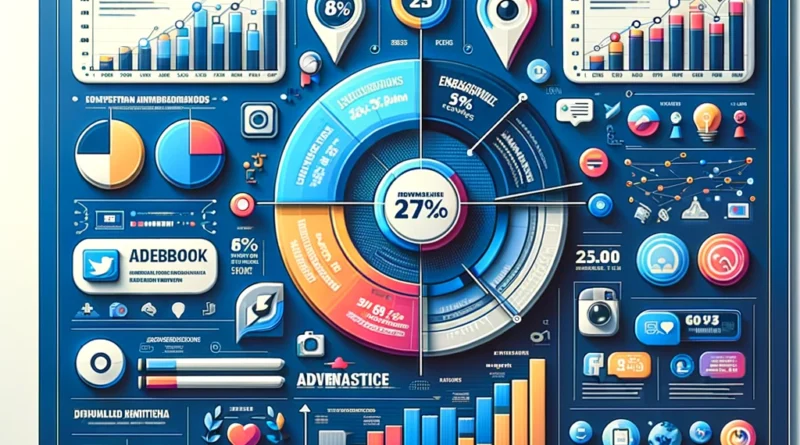Advertising on Facebook vs. Instagram: Navigating the Social Media Ad Landscape
In the ever-evolving realm of digital marketing, understanding the nuances between advertising on different platforms is crucial for maximizing impact. Two giants that dominate the social media advertising landscape are Facebook and Instagram. Despite being owned by the same parent company, Meta Platforms, Inc., each platform offers unique advantages and serves diverse audience demographics. This article delves into the intricacies of advertising on Facebook and Instagram, guiding businesses in making informed decisions tailored to their marketing goals.
Understanding the Platforms
Facebook: The Diverse Giant
Facebook, with its extensive global reach, caters to a wide demographic. It’s characterized by its versatility in ad formats, including image, video, carousel, slideshow, and more. Facebook’s detailed targeting options are unparalleled, allowing advertisers to pinpoint their audience based on interests, behaviors, demographics, and even connections. The platform is especially beneficial for businesses aiming to foster community engagement, generate leads, or drive traffic to their websites.
Instagram: The Visual Powerhouse
Instagram, on the other hand, thrives on high-quality visual content. Its user base skews towards a younger demographic, making it ideal for brands with visually appealing products or services targeting millennials and Gen Z. Instagram’s Stories and Reels offer creative, temporary ad formats that are perfect for capturing the fleeting attention of users. The platform is particularly effective for increasing brand awareness and reaching an audience that values aesthetics and storytelling.
Why Advertise on Facebook?
- Unmatched Reach: Facebook’s massive user base ensures your ads can reach a broad and diverse audience.
- Advanced Targeting: Leverage detailed targeting options to reach specific demographics, interests, and behaviors.
- Versatile Ad Formats: Choose from a variety of ad formats to best convey your message and engage your target audience.
- Robust Analytics: Facebook provides comprehensive analytics, enabling advertisers to measure ad performance and ROI effectively.
Why Advertise on Instagram?
- Visual Engagement: Utilize Instagram’s visually driven platform to create compelling visual narratives for your brand.
- Younger Audience: Access a younger demographic that is highly engaged and receptive to innovative and creative content.
- Influencer Partnerships: Collaborate with influencers for authentic endorsements that resonate with your target audience.
- Shopping Features: Take advantage of Instagram’s shopping features to seamlessly integrate product discovery and purchasing.
Combining the Strengths of Both Platforms
For many businesses, the decision isn’t Facebook or Instagram, but rather how to strategically use both to complement their overall marketing strategy. By leveraging the unique strengths of each platform, advertisers can create a cohesive and comprehensive advertising campaign that maximizes reach, engagement, and conversions.
- Cross-Platform Campaigns: Implement campaigns that span both platforms to increase visibility and reinforce messaging.
- Content Variation: Tailor content to fit the strengths and audience preferences of each platform, using more detailed storytelling on Facebook and visually captivating content on Instagram.
- Unified Analytics: Utilize Meta’s unified analytics tools to gain insights across both platforms, optimizing campaigns for better performance.
Conclusion
In the dynamic landscape of social media advertising, both Facebook and Instagram offer valuable opportunities for brands to connect with their audiences. By understanding the unique advantages of each platform, businesses can craft tailored advertising strategies that resonate with their target demographic, drive engagement, and achieve their marketing objectives.
